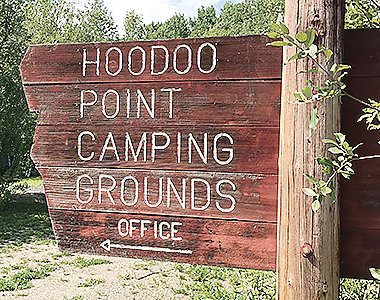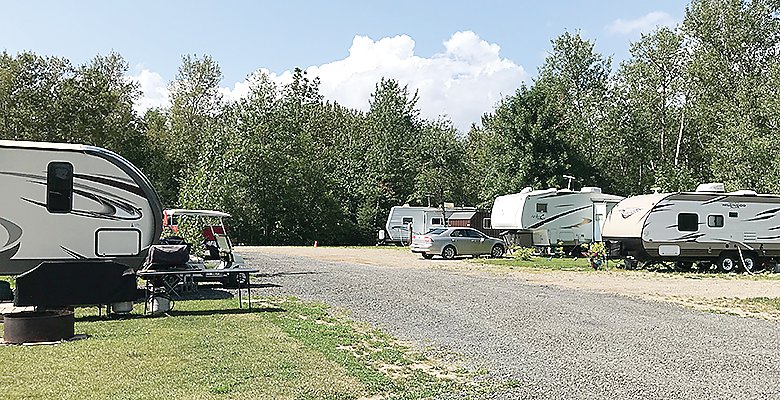Support the Timberjay by making a donation.
Managers: Campground upgrade project went awry
Sewer upgrades, RV site expansion plagued by minimal oversight, poor workmanship, and higher-than-projected costs
TOWER— The 2018 addition of seven seasonal RV sites and an upgrade to aging wastewater infrastructure at the Hoodoo Point Campground fell far short of the expectations of the managers of the …
This item is available in full to subscribers.
Attention subscribers
To continue reading, you will need to either log in to your subscriber account, or purchase a new subscription.
If you are a current print subscriber, you can set up a free website account and connect your subscription to it by clicking here.
If you are a digital subscriber with an active, online-only subscription then you already have an account here. Just reset your password if you've not yet logged in to your account on this new site.
Otherwise, click here to view your options for subscribing.
Please log in to continue |
Managers: Campground upgrade project went awry
Sewer upgrades, RV site expansion plagued by minimal oversight, poor workmanship, and higher-than-projected costs
TOWER— The 2018 addition of seven seasonal RV sites and an upgrade to aging wastewater infrastructure at the Hoodoo Point Campground fell far short of the expectations of the managers of the city-owned campground, and the final cost nearly doubled the original estimate for the project.
Those are the findings of a Timberjay investigation into the troubled project, which remains caught up in recriminations and a standing demand by the contractor for final payment on the project.
The campground managers, Randy and Julie Pratt, say they recognized the need for replacement of aging sewer laterals and other sewer infrastructure at the campground and were hopeful that the addition of seven new seasonal RV sites would help pay for the project. But they became increasingly alarmed as the project got underway. They say they attempted to alert project managers and now-former city officials about sloppy work by the contractor, Eveleth-based Utility Systems of America or USA, and questionable engineering and oversight by the city’s engineering firm, Short, Elliott and Hendrickson, or SEH. Yet those former city officials, according to the Pratts, appeared more interested in keeping the problems under wraps than working to get the project back on track. In the end, the couple believes the taxpayers of the city were poorly served by SEH, USA, and by former city officials who largely ignored their pleas to intervene.
While unhappy about the project overall, the couple continues to enjoy their work at the campground, which provides a popular and friendly “place at the lake” for countless visitors during the course of the summer.
The couple say they had wanted to speak out for more than a year about what they saw as a poorly-executed project, but worried that former city officials would retaliate if they did so. Current city officials in Tower recently gave the Pratts permission to speak to the Timberjay.
That’s a marked change from the previous administration. The Pratts say that both former city clerk-treasurer Linda Keith and former mayor Josh Carlson had told them last year they could no longer speak to either the contractors or the engineers, after the pair had tried to intervene when the engineers and contractors were making obvious errors. “I was called to the office twice and got my a__ chewed out, threatening me, that if you talk to them again, you’re done,” recalls Randy Pratt.
Obvious errors
Among the most obvious errors, according to the Pratts, was the improper location of utilities at the new RV sites. Virtually all RVs in use today position their utility hook-ups, including electric, water, and sewer, on the driver’s side of the vehicle. But they said the plans that SEH engineer Jason Chopp developed had utilities positioned on both sides of the vehicle pad where RVs are supposed to park when utilizing a campsite. That would have required each RV user to run an extension cord around or under their vehicle, had the Pratts not pointed out the mistake, which contractors then had to redo. USA operator Dan Lamppa said his crew was just following the plans drawn up by SEH, and said his company billed the city for the additional work to fix the mistake.
It was just one of several such errors.
A campground water spigot, which was designed to provide water access for tent campers at the campground, ended up being located in the middle of one of the new RV campsites. “Randy asked them ‘why was it in the middle of somebody’s site?’” recalls Julie, who added that one of the engineers on the site assured him it would be in the right location once everything was done. “It’s not even close,” she said.
Perhaps the most upsetting to the Pratts is the fact that the layout of the new RV sites meant they were smaller than they had expected, which means they can’t house the large RVs that have become increasingly popular with RV campers. “We can only put small pull-behind campers, or pickup campers in those spots,” said Randy.
Electrical work for the project proved another challenge, and not only because the electrical connections needed to be relocated. According to Randy Pratt, the electrician told him the project’s specifications weren’t consistent with the state’s electrical code. “He told me he wasn’t going to do any more work and I said well then don’t. Stop right now until you figure it out.” When the electrician walked off the job, Pratt said city officials blamed him for shutting the project down.
Perhaps the biggest outstanding issue remains the repair of a sewer main leading from the campground, which USA workers installed at a shallower grade than called for in the project specifications. A city inspection of the line also shows dips, apparently due to uneven settling, that can create backups over time. Jim Pucel, an engineer with USA, said soft soils along portions of the line should have had more foundation material installed, but said that requirement would had to have been in the original plan, or been directed through a change order once the soil deficiency became apparent during construction.
While the line appears to be operating for now, city officials, SEH, and Pucel recently met to try to determine who will take responsibility for repairing the dips. For now, it appears that city officials have decided that the current slope of the line is adequate, even if it’s less than what was specified.
USA’s Lamppa said he offered to split the cost of repairing the dips but, so far, the parties have yet to reach an agreement. “They’re still holding $34,000 of our money,” said Lamppa.
Lack of communication
Both the Pratts and USA’s Lamppa cite poor communication and flawed project management as among the biggest factors leading to the poor outcome of the campground project. “The main problem is they didn’t have a qualified person on site,” said Lamppa. “We tried to explain some of the issues, but they didn’t have good representation on the job to make changes as they were needed.”
The Pratts say they felt they had clearly communicated the project as they envisioned it to SEH’s Chopp but found it difficult to reach him once the project was underway. “We’re not sure that Linda (Keith) wasn’t the fault on that, said Randy. “Everything we did had to go through Linda to get to them.”
The Pratts say they tried repeatedly to get someone from the city to come out to see the issues for themselves. “But no one would come out because they said they were too busy. We just wanted to talk to someone to say this wasn’t what we wanted, but it was falling on deaf ears.”
Pratt said calls directly to SEH mostly went unanswered.
And while the Pratts are critical of USA, who they say dragged its heels much of the time, they agreed with Lamppa that SEH’s project oversight was almost non-existent. While SEH did maintain an inspector on site during construction, both the Pratts say it made little difference. “The guy was useless,” said Randy. “He never left his truck.”
Julie said she went to city hall one day in frustration to talk to Keith. “I told her straight out, we’re on an island all by ourselves and taxpayers are paying for junk. And she’s like, you’re not on an island. I know exactly what’s going on out there. She said she talked to Jason [Chopp] every day. I told her Jason hadn’t been out there in three weeks.”
As the city, SEH, and USA argue over who’s to blame, Julie suggests there’s plenty to go around.
“They’re deciding who’s responsible for this? Is it the guy who sat here in his truck and didn’t correct things or is it the contractor who didn’t follow the plan?”
Randy put it bluntly. “SEH dropped the ball on this big time,” he said.
Costs spiraled
The project, which the former Tower City Council approved in 2017, was supposed to cost about $290,000, according to an initial engineer’s estimate. Extra revenue from the seven new seasonal sites, planned as part of the project, was expected to cover the payments on a revenue bond that was to provide the funding.
But costs soon spiked sharply as construction bids came in far above projections. But the higher costs didn’t prompt city officials to take a second look. Instead, in fall of 2017, they approved the low construction bid from USA for $412,391. So far, the city has actually paid out $366,317 to USA, and it remains uncertain whether the city will pay the remainder of the contract given some of the issues with the company’s work.
Questions about SEH’s performance don’t seem to have impacted their payday from the project. To date, city records show that SEH has received $113,406 for its handling of the project. That amounts to just under 24 percent of the total project cost, which is well above the norm for engineering and project management.
“I said from the very beginning this was a taxpayer rip-off,” said Julie. “I told Linda that when I went to her office and she did not listen to me.”
The Timberjay reached out to Chopp, fellow SEH engineer Matt Bolf, and SEH representative Mike Larson, with questions and an opportunity to respond to criticisms leveled by others in this report. More than three weeks later, no one from SEH has provided comment or answered questions.











